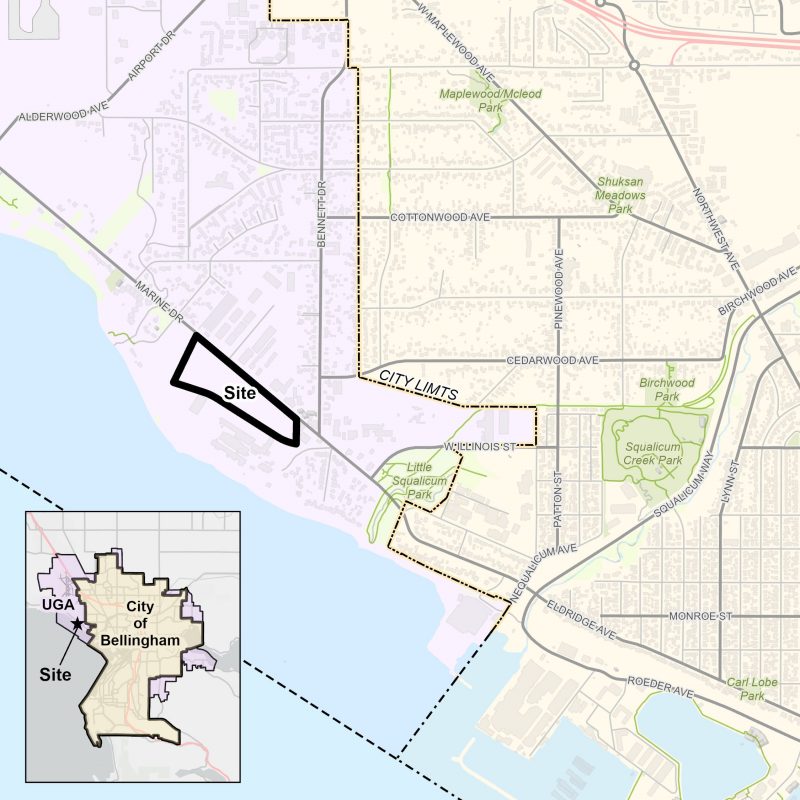(updated 03/12/2024)

About the proposed project
ABC Recycling has applied to Whatcom County for a permit to build a metal processing facility on Marine Drive. The proposed facility would be located outside the Bellingham city limits, in the Urban Growth Area that is currently part of unincorporated Whatcom County.
Because the facility’s proposed location is outside city limits, the City does not have land use or zoning authority over the project. Whatcom County has the ultimate authority and will decide whether to approve this project.
Get the most current information for this project on the Whatcom County website.
City of Bellingham’s role: Co-lead SEPA review
We know the outcome and impacts of this project are important to Bellingham community members. We’ve chosen to work with Whatcom County to co-lead the required environmental analysis for this project, the State Environmental Policy Act (SEPA) review.
Co-leading the SEPA review of this proposed facility gives us the ability to represent the concerns of Bellingham residents more directly in the process. We’re voluntarily taking this role so the City is integral to evaluating if and to what extent the proposed metal processing facility will have environmental impacts, and if so, to determine how best to mitigate those impacts.
Requesting to be a co-lead of a SEPA review for development activity outside the city is not typical for the City. We carefully considered this role in contrast with how we’ve approached similar projects in the past. Ultimately, we believe stepping up to share responsibility for the environmental review of this project is in Bellingham residents’ best interest.
How can you participate?
Community members will be able to weigh in during the SEPA process. As a co-lead of the SEPA review, we’ll provide information about how you can participate and learn more.
You can find more information about the proposed metal processing facility on Whatcom County’s project page. When the project is open for public comment, you will also find instructions for providing comments on that webpage.
